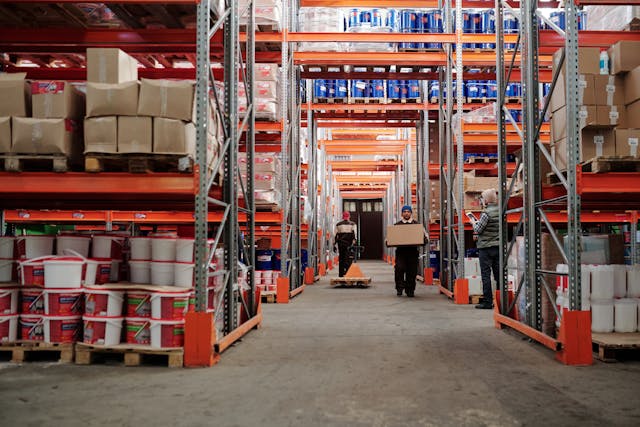Most manufacturers focus on the sticker price when buying equipment. That number is easy to see, easy to compare, and easy to budget for. But here’s the thing—the purchase price usually represents just a fraction of what you’ll actually spend on that machine over its lifetime.
The real cost of manufacturing equipment unfolds over years, sometimes decades. And plenty of businesses learn this lesson the hard way, watching a “bargain” purchase turn into a money pit while supposedly expensive equipment pays for itself several times over.
The Purchase Price Is Just the Beginning
When you write that initial check, you’re really just buying a ticket to an ongoing relationship with that piece of equipment. The machine arrives, gets installed, and then the real expenses start piling up.
Installation itself can be a surprise. Heavy machinery needs proper foundations, electrical work, sometimes modifications to your facility layout. A press that costs $50,000 might need another $8,000 in installation work before it stamps its first part. Nobody wants to hear that after the purchase order is signed, but it happens constantly.
Then there’s training. Your operators need to learn the equipment, and that takes time. Some machines require specialized knowledge that your current team doesn’t have. You’re paying wages while people learn instead of produce, and you might be bringing in outside trainers at $1,500 per day.
Energy Costs Add Up Faster Than You Think
Walk through any manufacturing facility and you’ll find equipment that’s basically running your electric meter like a taxi fare. Older machines are the worst offenders. That 15-year-old CNC machine might use twice the electricity of a newer model doing the same work.
The math gets ugly when you run the numbers. An inefficient machine drawing an extra 10 kilowatts over 16 hours a day, 250 days a year—you’re looking at roughly 40,000 kilowatts annually. At typical industrial rates, that’s $4,000 to $6,000 every single year just in wasted electricity. Over a decade, that’s another $50,000 on top of everything else.
Maintenance Eats Into Profits Quietly
Every machine needs maintenance. Some need a lot of it. The question is whether you’re dealing with routine upkeep or constant emergency repairs. Working with companies like Premier Equipment means access to machinery built for reliability, which can dramatically reduce maintenance headaches over the equipment’s lifetime.
Preventive maintenance is the baseline cost—regular oil changes, filter replacements, calibration checks, parts that wear out on schedule. For many machines, you’re looking at $2,000 to $5,000 annually just keeping things running normally. That’s if everything goes according to plan.
But equipment doesn’t always cooperate. Breakdowns happen, and that’s when costs explode. The parts themselves might run a few thousand dollars. The technician’s time adds more. But the real killer is downtime.
When a critical machine stops, your entire production line might stop with it. You’re paying workers who can’t work. You’re missing delivery deadlines. You might be paying rush fees to get replacement parts. A single major breakdown can easily cost $20,000 to $30,000 when you factor in everything. Have two or three of those per year and suddenly your “cheap” equipment doesn’t look like such a great deal.
Downtime Costs More Than Most People Calculate
Production downtime is where manufacturers really lose money, and it’s tricky to calculate because the costs spread out in different directions.
There’s the obvious loss—you’re not making parts, so you’re not generating revenue. If your facility normally produces $5,000 worth of goods per hour, every hour of downtime costs you that $5,000. But that’s just the start.
You’ve got labor sitting idle but still on the clock. You might have raw materials that can’t be processed. Customer orders get delayed, and some customers won’t wait—they’ll find another supplier. Getting that business back later might be impossible.
Then there’s overtime to catch up after the machine is fixed. You’re paying time-and-a-half or double-time to make up for lost production. Rush shipping charges to get orders out late. The costs multiply in ways that don’t show up in any single line item on your books.
Companies that invest in reliable equipment and good maintenance programs typically see less than 2% downtime. Facilities with chronic equipment problems can hit 8% to 10% downtime. On a $10 million annual production capacity, that difference represents $600,000 to $800,000 in lost output every year.
Parts and Consumables Never Stop
Some equipment goes through consumables like a teenager goes through snacks. Cutting tools, belts, filters, lubricants, abrasives—the list goes on. These aren’t one-time purchases; they’re recurring expenses that continue for the machine’s entire life.
A waterjet cutter might use $10,000 to $15,000 in abrasive material annually. A plasma cutter goes through consumables that cost several thousand dollars. Even relatively simple equipment can have surprisingly expensive appetite for replacement parts.
And here’s something most people don’t think about: parts availability. Equipment from reputable manufacturers usually has parts readily available for 20 or 30 years. Machines from companies that go out of business or obscure overseas manufacturers? Good luck finding parts in five years. You might end up custom fabricating components at ridiculous expense or scrapping an otherwise functional machine.
The Hidden Value of Quality
This is where the lifecycle cost picture gets interesting. Higher-quality equipment costs more upfront, but the math changes when you spread that cost over 15 or 20 years of reliable operation.
Premium equipment typically uses less energy, breaks down less often, and operates more accurately with less waste. Working with professional suppliers means access to machinery built for longevity rather than just hitting a price point. The difference shows up in your operating costs year after year.
A $100,000 machine that runs reliably for 20 years with moderate maintenance costs comes out way ahead of a $70,000 machine that needs major repairs every 18 months and dies after 12 years. The cheaper option might actually cost you $150,000 or more when you account for repairs, downtime, and early replacement.
Making Better Equipment Decisions
Smart manufacturers look beyond the purchase price to calculate total cost of ownership. That means estimating energy consumption, maintenance requirements, expected downtime, and realistic lifespan.
Talk to other companies using the same equipment. What’s their actual experience? How often does it break? Are parts expensive? Does the manufacturer support it well? Real-world feedback beats marketing materials every time.
Consider how the equipment fits your production needs. Oversized equipment wastes energy running at partial capacity. Undersized equipment wears out faster from constant heavy use. Getting the sizing right matters more than most people realize.
Equipment purchases are long-term decisions with long-term consequences. The manufacturer who spends an extra $30,000 for better equipment and saves $8,000 annually in operating costs breaks even in four years—then comes out ahead for the next 10 or 15 years. The real cost isn’t what you pay to acquire equipment. It’s what you pay to own it, operate it, maintain it, and eventually replace it. Companies that understand this difference make better decisions and run more profitable operations.









